| Project 420a Sleeper, Part 3

In Part 2 of this project we covered the appearance aspect of this sleeper. Now we will cover some performance upgrades we can perform that can go virtually undetected by the naked eye.
Sucked or Blown?
 Turbo System Turbo System
There are many ways one can go about upgrading their 420a to squeeze some extra ponies out of it. Some prefer to go the 'naturally aspirated' route while others dabble into the world of 'forced induction'. It's no secret that the 420a has a bit of trouble waking up that extra potential when going down the 'N/A' path. Granted, there are a few people currently running low 15 to mid 14 second passes, such as Mark Bullett who currently runs a 14.33 second quarter mile pass at 95.77mph with his 1997 Mitsubishi Eclipse RS without the aid of forced induction, but for most people the results haven't been nearly as successful.
In this project, we have decided to go with forced induction as our power adder of choice. Since the stock internal components of the 420a have been proven time and again to handle up to 300hp when properly tuned and maintained, while still having long term reliability, we have opted to build a turbo system which can bolt on to a completely stock engine without the need of upgrading any internal engine parts. Once we have reached the 300hp mark and squeezed every ounce of excitement from the engine, we will pull the engine and start our upgrade for higher boost and power using the existing system. This will give everyone an idea what to expect when running a stock engine versus an engine built for higher boost.
Shake, Rattle, and Body Roll
 Strut and Sway Bars Strut and Sway Bars 
Since we are keeping the stock ride height with this sleeper, we looked into simple "hidden" upgrades that could be performed to aid in handling. There's a lot of room for improvement in this category and plenty of inexpensive parts to help us corner far better than we probably have the need for. Adding a front and rear, upper strut tower brace bar along with a rear, lower tie bar is probably the most common inexpensive upgrade. This helps stiffen the body and reduce body flex dramatically during hard corning. You'll notice the difference with all three braces installed on the very next off ramp you take without a doubt. Next would be to upgrade the front anti-sway bar with a larger diameter replacement. You can even purchase an aftermarket, beefed up rear anti-sway bar to greatly improve the rear of the cars stability. These, coupled with an upgraded urethane bushing kit for the suspension components will make you car respond far better than it did the day it was built.
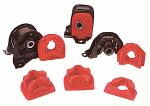 Urethane Bushings Urethane Bushings
Speaking of urethane bushing upgrades, another option is a set of motor mount inserts. These slide inside the factory motor mounts to help stiffen them up, resulting in less absorption of power transfer from the engine to the wheels. Though this helps put the power to the pavement, it does however cause quite a bit of engine vibration in the car when all 3 mounts are reinforced. If the front motor mount is left untouched and only the side and rear mount are upgraded it should reduce the added vibration, making the ride a bit more tolerable.
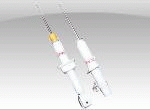 Struts Struts
Lastly, we'll address the struts. Though the stock struts do a rather fair job of keeping things in check, they have their limitations. Adding a set of quality, adjustable, stock replacement struts also can help with cornering and acceleration. By having the ability to adjust the firmness of the front and rear struts, you will be able to tailor the 'feel' of your ride to accommodate your driving tastes. For instance, on track day most people will adjust the rear struts to their firmest rating to help reduce 'inertial drop' in the rear of the car. This is when a car is launched forward so quickly that the rear of the car seems to squat down towards the ground. The transfer of weight which occurs has an adverse effect on the cars ability to apply all of its power in a forward motion. Which explains why you see wheelie bars front-wheel drive race cars. Having the firmer suspension in the rear also aids in acceleration in a car already in motion as well. If you were to quickly accelerate from 40mph, the same inertial drop factor applies. Less squat, more go.
Five Gears or Four?
Our project car came with an automatic transmission which wasn't our first choice. This isn't because it lacks potential, (though it does have lower horsepower limitations than the manual transmission) more so because we enjoy the fun of shifting through the gears of a 5 speed manual transmission. We were lucky enough to find a parts car for $300 with a fully functioning 5-speed drivetrain that can be swapped into our project car at a later date. If you are content with your automatic transmission and just want to give it a little extra oomph, there are a few things that can help.
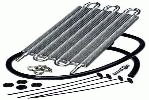 Tranny Coolers Tranny Coolers
The biggest killer of these automatic transmissions is heat. On the bottom of the radiator is a small section delegated to cooling the transmission fluid in a rather poor fashion. Adding a small transmission radiator, also known as a tranny cooler, that is separate from the coolant radiator will extend the life of your drivetrain and give you far more consistent results when you push it really hard. These transmission radiators are rather inexpensive and can be had for around $35.
 Shift Kits Shift Kits
Shift kits for the auto tranny is another well known upgrade. The stock transmission is meant to slip a bit between shifts for a smoother ride. Actually, this is really bad for your transmission and is only done for customer comfort and convenience. Adding the shift kit will give you firmer shifts which will help with the response time between gears. Be warned that it will be a noticeable transition when it shifts, though most people are willing to sacrifice the smooth shifts for the performance gain they have received.
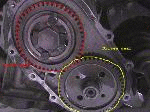 Final Drive Mod Final Drive Mod
A well known modification is to take the final drive gears from the '99 Dodge Stratus with the 2.0L engines . The final drive gear ratio in these cars is more suited for the powerband of the 2G. This mod has been done many times with happy results by all who have done it. We probably will upgrade the project cars tranny cooler for now but I dont see the need to go any further with modding the auto tranny when we will be swapping in the 5 speed later on. For specific info on this mod, simply use an internet search engine such as Google for the proper transmission swap information.
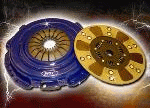 Clutch Upgrades Clutch Upgrades
The 5 speed manual transmissions are quite capable of handling high horsepower levels while still being daily driven and very reliable. Bill Hahn Jr. of Hahn Racecraft currently has the worlds fastest 2G 420a powered car and he uses the stock manual transmission. The factory clutch is capable of handling at least 200-220hp without the need of upgrading. Anything past that level and your going to need a better clutch. There are a few companies who offer different levels of clutches for this transmission such as SPEC, CLUTCH MASTERS, and SBC so at least you have some choices.
 LSD LSD
Unfortunately, the manual transmission doesn't come with a limit-slip differential, so you are burdened by the "one wheeled" power transfer. Phantom-Grip makes an item which somewhat converts the drivetrain to LSD, though it is not a 'true' LSD setup. If you are interested in going with a L.S.D. setup to improve handling and traction during launches, look into a true L.S.D. conversion if you can.
Stop Talking and Start Showing
Curious what is going in the Project car yet? I bet you are. Don't lie, you are and we're gonna tell you! Click Below!
Continue to the 4th article!
420a_Sleeper_Part_4
Back to Project 420a Sleeper:
Project_420a_Sleeper
|
|
Document statistics:
Last modified on 2007-06-30 10:01:50
by totaleclipse_05
|
|



 Turbo System
Turbo System Strut and Sway Bars
Strut and Sway Bars 
 Urethane Bushings
Urethane Bushings Struts
Struts  Tranny Coolers
Tranny Coolers Shift Kits
Shift Kits Final Drive Mod
Final Drive Mod Clutch Upgrades
Clutch Upgrades LSD
LSD